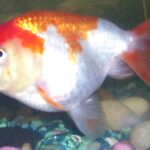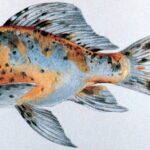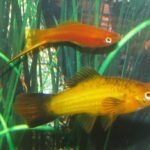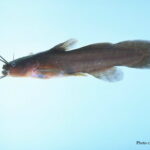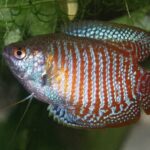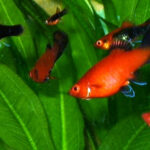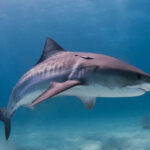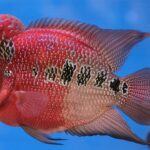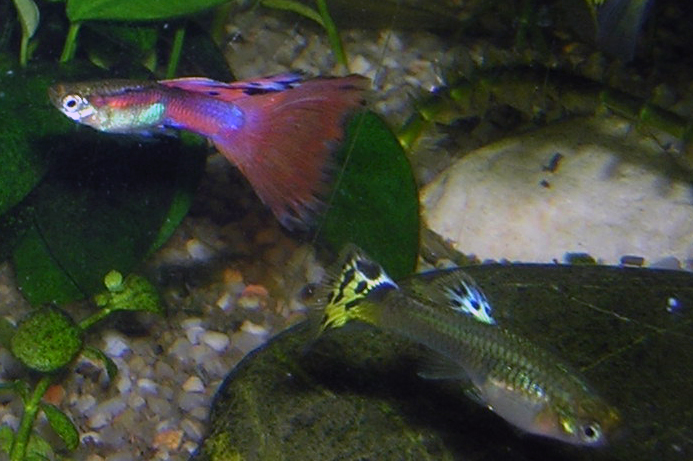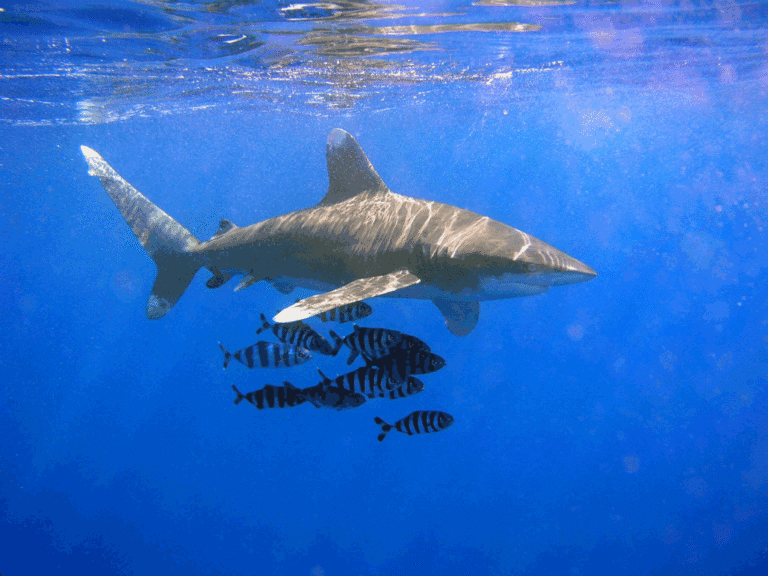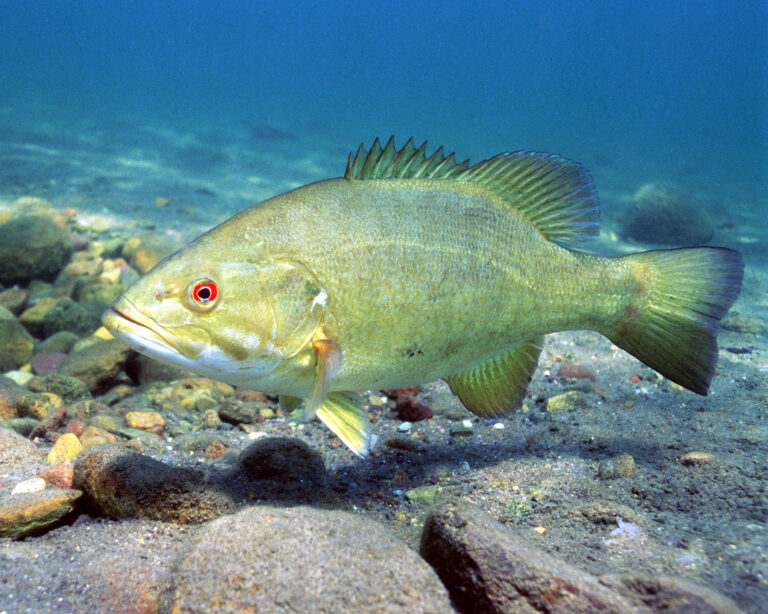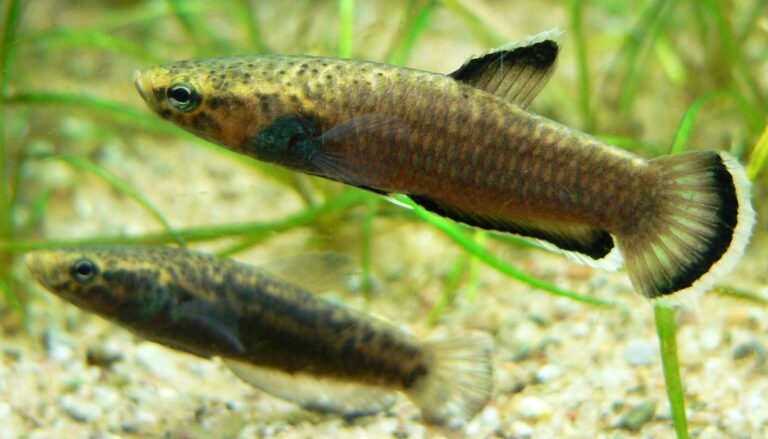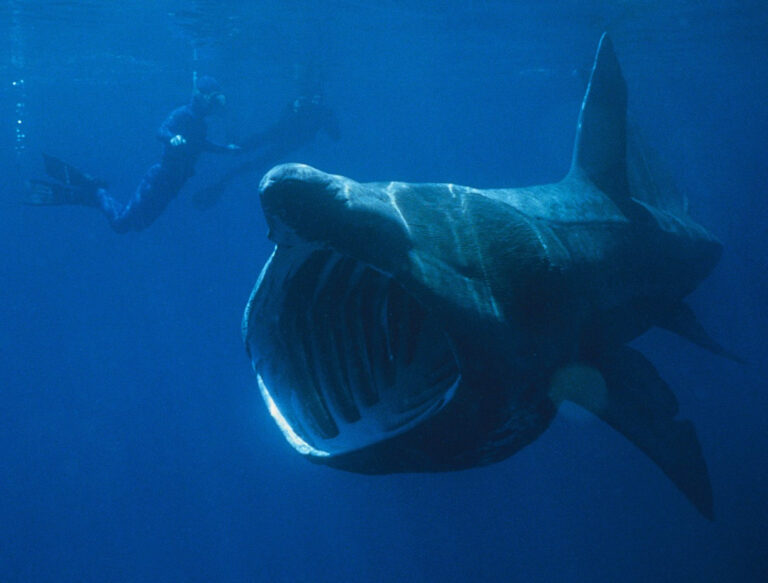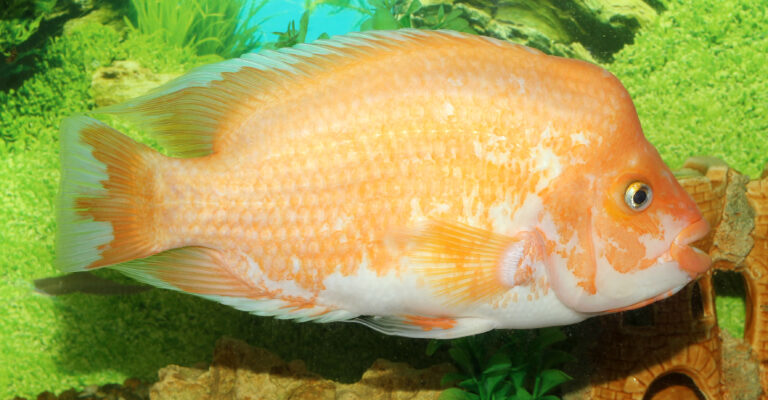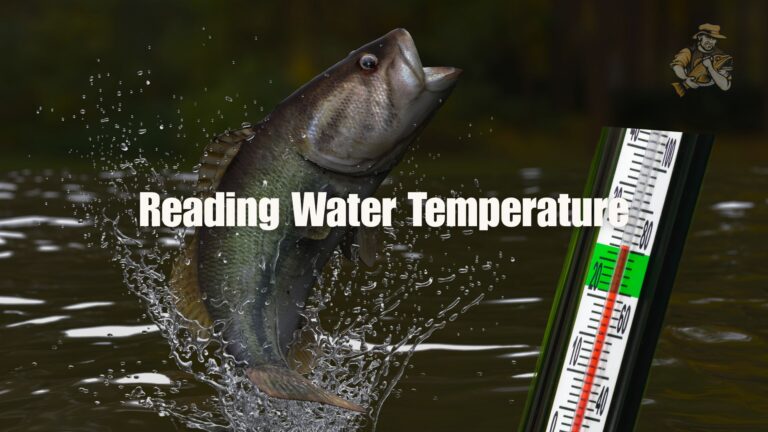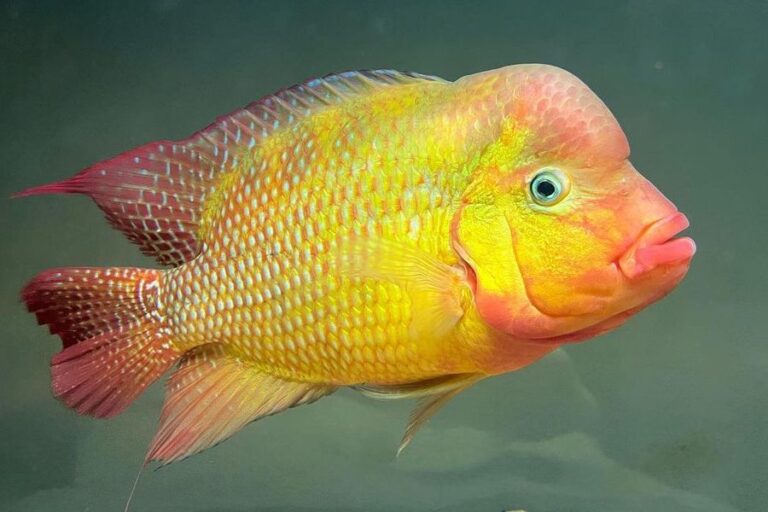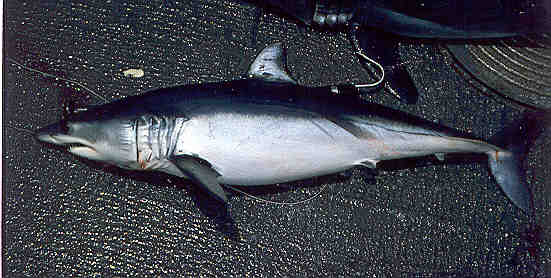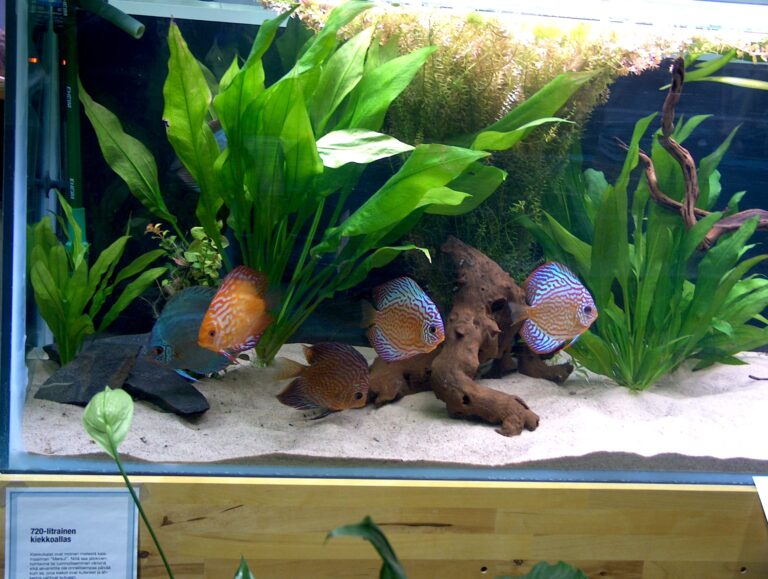Yellow Bullhead
By Ryan Maron | Last Modified: June 30, 2025
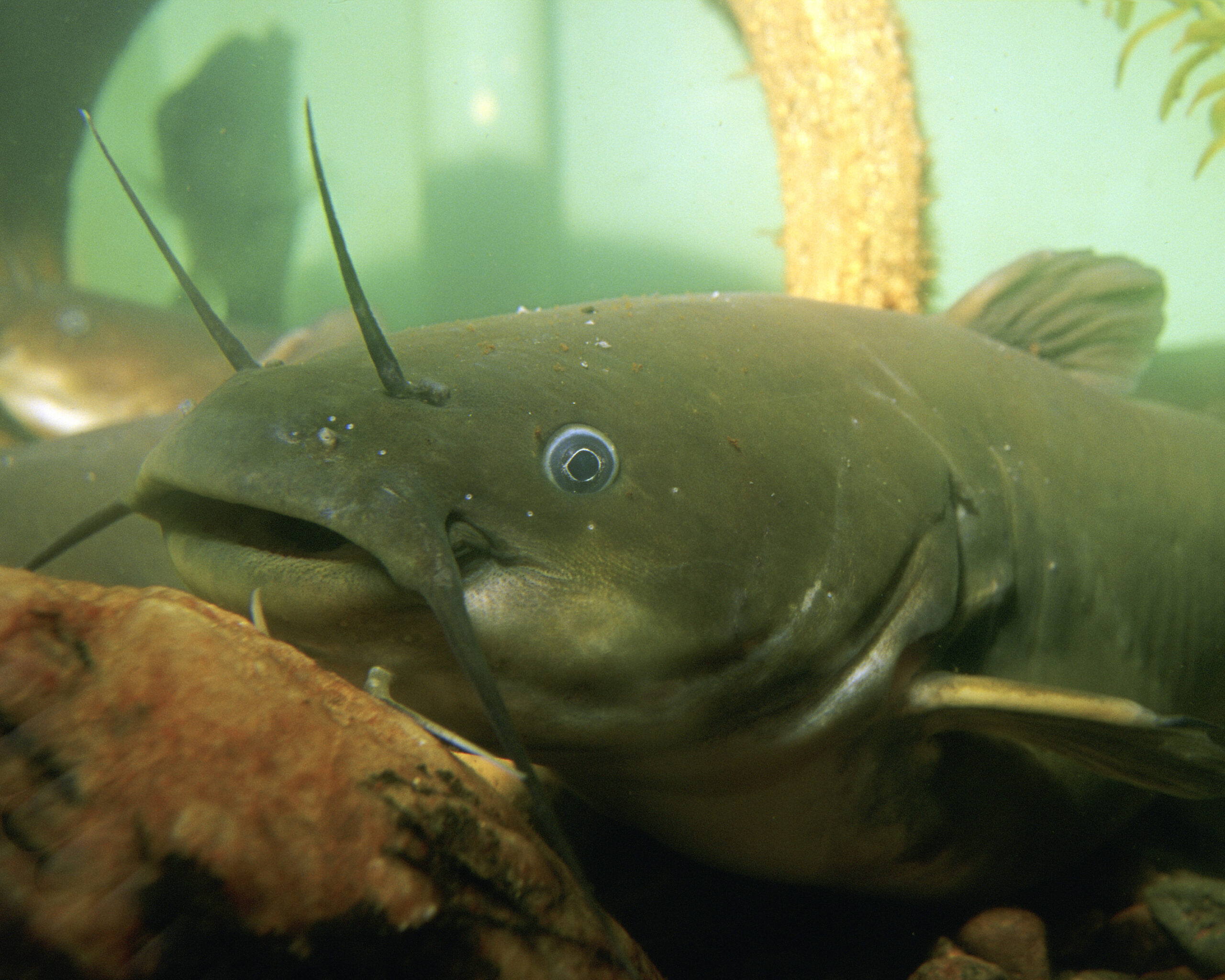
The Yellow Bullhead (*Ameiurus natalis*) represents one of North America’s most widespread and ecologically significant freshwater catfish species. This robust member of the Ictaluridae family serves as both a valuable game fish and a crucial component of aquatic food webs throughout its extensive range. Distinguished by its distinctive yellow-brown coloration and barbeled sensory system, the Yellow Bullhead occupies a unique ecological niche as an opportunistic bottom-dweller that thrives in diverse freshwater environments from shallow ponds to large river systems.
The species plays a fundamental role in freshwater ecosystems as both predator and prey, consuming invertebrates, small fish, and organic matter while providing sustenance for larger predatory species. Its remarkable adaptability to varying water conditions and temperatures has allowed the Yellow Bullhead to colonize habitats ranging from pristine wilderness lakes to urban retention ponds, making it an important indicator species for freshwater ecosystem health. For anglers, this catfish offers accessible fishing opportunities throughout much of the United States and southern Canada, contributing significantly to recreational fisheries and local economies.
| Feature | Details |
| Common Name | Yellow Bullhead |
| Scientific Name | Ameiurus natalis |
| Family | Ictaluridae |
| Typical Size | 20-35 cm (8-14 inches), 0.2-1.0 kg |
| Habitat | Shallow lakes, ponds, slow rivers |
| Diet | Omnivorous bottom-feeder |
| Distribution | Eastern North America |
| Conservation Status | Least Concern |
Taxonomy & Classification
The Yellow Bullhead belongs to the order Siluriformes, which encompasses all catfish species worldwide. Within this diverse order, *Ameiurus natalis* is classified under the family Ictaluridae, commonly known as North American freshwater catfish. This family includes approximately 46 species distributed across seven genera, with the genus *Ameiurus* containing the bullhead catfishes specifically.
The scientific name *Ameiurus natalis* was first described by Lesueur in 1819, with the genus name derived from the Greek words “a” (without) and “meiouros” (curtailed), referring to the complete or nearly complete tail fin. The species epithet “natalis” means “native” in Latin, emphasizing its indigenous status to North American waters. The Yellow Bullhead shares its genus with other notable species including the Black Bullhead (*Ameiurus melas*) and Brown Bullhead (*Ameiurus nebulosus*), forming a closely related group of freshwater catfish.
Phylogenetic studies have revealed that the Yellow Bullhead diverged from its closest relatives approximately 5-7 million years ago during the Miocene epoch. Modern genetic analysis places the species within a monophyletic clade that includes all North American bullheads, supporting their classification as a distinct evolutionary lineage separate from the larger channel catfish group. The taxonomic stability of *Ameiurus natalis* has remained consistent since its original description, with no significant subspecies currently recognized across its range.
Physical Description
The Yellow Bullhead exhibits distinctive morphological characteristics that distinguish it from other North American catfish species. Adults typically measure 20-35 centimeters in total length, with exceptional specimens reaching up to 47 centimeters. The body displays a robust, laterally compressed form with a broad, flattened head comprising approximately 25-30% of the total body length. The species derives its common name from the characteristic yellow-brown to olive-yellow coloration on the dorsal and lateral surfaces, transitioning to a cream or white ventral region.
The head features four pairs of sensory barbels that serve as chemoreceptors for locating food in murky water conditions. The maxillary barbels extend beyond the gill covers, while the mental barbels beneath the chin are shorter and more numerous. The mouth is terminal and relatively large, equipped with patches of small, recurved teeth arranged in bands on both jaws. These dental arrangements facilitate the processing of diverse food items ranging from aquatic invertebrates to plant material.
The dorsal fin contains one sharp spine followed by six to seven soft rays, while the anal fin typically bears 24-27 rays, a key diagnostic feature for species identification. The adipose fin, characteristic of all catfish, is moderately sized and positioned posterior to the dorsal fin. The caudal fin exhibits a slightly forked or truncate shape, distinguishing it from the more deeply forked tails of channel catfish. Pectoral fins contain strong, serrated spines capable of inflicting painful wounds when the fish is handled improperly.
The skin lacks scales entirely, instead featuring a smooth, mucus-covered surface that aids in osmoregulation and provides protection against parasites and pathogens. Coloration patterns vary considerably based on habitat conditions, with individuals from clear water environments displaying more vibrant yellow tones, while those from turbid or heavily vegetated waters often appear darker with more pronounced brown mottling.
Habitat & Distribution
The Yellow Bullhead demonstrates remarkable habitat versatility, occupying a diverse array of freshwater environments throughout eastern North America. The species ranges from the Great Lakes region southward to the Gulf Coast states, extending westward to the eastern edges of the Great Plains. This extensive distribution encompasses major river systems including the Mississippi, Missouri, Ohio, and Tennessee river basins, as well as countless smaller tributaries and associated wetlands.
Preferred habitats include shallow, warm waters with soft substrates and abundant aquatic vegetation. Yellow Bullheads thrive in lentic environments such as ponds, lakes, reservoirs, and backwater areas where water temperatures remain stable and food resources are concentrated. The species demonstrates exceptional tolerance for low oxygen conditions, allowing it to survive in heavily vegetated or eutrophic waters where other fish species cannot persist. This adaptation proves particularly valuable during summer months when dissolved oxygen levels naturally decline in shallow water bodies.
The species exhibits strong preferences for areas with muddy or sandy bottoms that facilitate burrowing behavior and provide access to benthic invertebrates. Optimal water temperatures range from 20-26°C during active feeding periods, though Yellow Bullheads can tolerate temperature extremes from near-freezing to 35°C. pH tolerance spans from slightly acidic (6.5) to moderately alkaline (8.5) conditions, contributing to their success in diverse aquatic environments.
Seasonal movements within their habitat range are typically limited, with most populations remaining relatively sedentary throughout the year. However, during spawning periods, adults may migrate to specific nesting areas characterized by shallow water depths and appropriate substrate conditions. The species’ ability to survive in seasonal wetlands and temporary pools provides crucial ecological connectivity between permanent water bodies during high-water periods.
Diet & Feeding Behavior
The Yellow Bullhead functions as an opportunistic omnivore with feeding strategies that capitalize on diverse food resources throughout its aquatic environment. This adaptable approach to nutrition contributes significantly to the species’ ecological success across varied habitat types. Primary food sources include benthic invertebrates, aquatic insects, mollusks, crustaceans, small fish, fish eggs, and various forms of organic detritus.
Feeding activity peaks during twilight and nighttime hours when the species utilizes its highly developed chemosensory system to locate food items. The barbels contain thousands of taste buds that can detect chemical gradients in the water column, allowing Yellow Bullheads to locate prey items buried in sediments or hidden among aquatic vegetation. This sensory capability proves particularly advantageous in turbid water conditions where visual predation becomes ineffective.
Foraging behavior involves systematic exploration of bottom substrates through a combination of barbel probing and substrate disturbance. Individuals often root through soft sediments, creating characteristic feeding craters that can be observed in shallow water areas. This feeding activity inadvertently benefits other fish species by releasing trapped invertebrates and increasing food availability throughout the water column.
Seasonal dietary variations reflect changing prey availability and metabolic demands. During spring and early summer, Yellow Bullheads consume higher proportions of protein-rich invertebrates to support gonadal development and spawning activities. Late summer and fall feeding focuses on energy-dense food sources including fish carrion, plant seeds, and accumulated organic matter that will sustain the fish through winter dormancy periods. The species’ ability to process plant materials through an elongated digestive tract allows for efficient extraction of nutrients from cellulose-based food sources.
Juvenile Yellow Bullheads exhibit different feeding patterns compared to adults, focusing primarily on zooplankton, small invertebrates, and algae during their first year of life. This ontogenetic diet shift reduces intraspecific competition and maximizes growth rates during critical developmental periods.
Behavior & Adaptations
Yellow Bullheads display complex behavioral repertoires that reflect their evolutionary adaptations to freshwater environments. The species exhibits primarily nocturnal and crepuscular activity patterns, remaining concealed in vegetation, under logs, or buried in sediments during daylight hours. This behavior minimizes predation risk while conserving energy for nighttime foraging activities.
Social behavior varies seasonally, with individuals maintaining largely solitary lifestyles outside of spawning periods. During winter months, Yellow Bullheads often aggregate in deeper water areas or buried in soft sediments, entering a state of reduced metabolic activity similar to hibernation. These winter aggregations can include dozens of individuals clustered in favorable microhabitats that provide protection from temperature extremes and predation.
The species demonstrates remarkable physiological adaptations for surviving in oxygen-depleted environments. Yellow Bullheads possess the ability to gulp atmospheric air and extract oxygen through specialized gill chambers, a behavior known as aerial respiration. This adaptation allows survival in waters with dissolved oxygen levels as low as 1-2 parts per million, conditions that would prove fatal to most other freshwater fish species.
Territorial behavior becomes pronounced during spawning seasons when males establish and defend nesting sites. These territories typically encompass areas of 2-5 square meters and are maintained through aggressive displays and physical confrontations with intruding males. Defensive behaviors include erecting fins, producing low-frequency vocalizations through specialized sonic muscles, and engaging in mouth-to-mouth combat when necessary.
The species exhibits notable homing abilities, with individuals capable of returning to specific habitat areas after displacement. This spatial memory appears to be mediated by a combination of chemical cues, magnetic field orientation, and landmarks recognition. Such navigational abilities prove essential for locating optimal feeding areas and returning to established territories during breeding seasons.
Stress responses in Yellow Bullheads include the production of alarm pheromones that warn conspecifics of potential dangers. These chemical signals can trigger avoidance behaviors in nearby individuals, providing a primitive form of communication that enhances survival rates within local populations.
Reproduction & Life Cycle
The reproductive cycle of Yellow Bullheads follows a well-defined seasonal pattern closely tied to water temperature and photoperiod cues. Spawning typically occurs from late spring through early summer when water temperatures reach 21-24°C, though timing can vary geographically based on local climate conditions. Sexual maturity is reached at 2-3 years of age, corresponding to lengths of approximately 15-20 centimeters.
Pre-spawning behaviors begin with males selecting and preparing nesting sites in shallow water areas with appropriate substrate conditions. Preferred locations include areas near logs, root systems, overhanging banks, or artificial structures that provide overhead cover. Males excavate circular depressions 30-60 centimeters in diameter using their caudal fins and mouth, creating saucer-shaped nests in sand, gravel, or firm mud substrates.
Courtship involves complex behavioral displays as males attract females to their prepared nests through a combination of visual signals and chemical communication. Receptive females approach the nest site where spawning occurs through synchronized swimming movements. The female deposits 300-7,000 adhesive eggs in the nest center, with larger females producing significantly more eggs than smaller individuals. Egg number correlates directly with female size and nutritional condition.
Following fertilization, the male assumes exclusive responsibility for parental care, a behavior uncommon among many freshwater fish species. Males guard the nest against predators and intruders while using their fins to circulate water over the developing eggs, ensuring adequate oxygenation and preventing fungal growth. This intensive parental care continues throughout the 6-10 day incubation period, with duration dependent on water temperature.
Newly hatched larvae remain in the nest for an additional 4-7 days while absorbing their yolk sacs and developing swimming capabilities. During this vulnerable period, the male continues protective behaviors and may move the larvae to alternative locations if conditions deteriorate. Once the fry become free-swimming, they form dense schools that remain under male protection for several additional weeks.
Juvenile growth rates vary considerably based on temperature, food availability, and population density. Under optimal conditions, young Yellow Bullheads can reach 8-12 centimeters by their first winter, though growth slows significantly during cold periods. The species exhibits moderate longevity, with maximum recorded lifespans approaching 10-12 years in natural populations.
Predators & Threats
Yellow Bullheads face predation pressure throughout their life cycle, with vulnerability patterns changing significantly between life stages. Eggs and larvae are consumed by various aquatic invertebrates, including dragonfly nymphs, diving beetles, and crayfish, despite protective behaviors exhibited by guarding males. Nest predation rates often exceed 50% in areas with high invertebrate densities or inadequate nesting habitat.
Juvenile Yellow Bullheads encounter predation from a diverse array of piscivorous species including largemouth bass, northern pike, muskellunge, and larger catfish species. Wading birds such as great blue herons, egrets, and kingfishers frequently target young bullheads in shallow water areas. Mammalian predators including raccoons, mink, and otters also contribute to juvenile mortality, particularly during low-water periods when fish become concentrated in isolated pools.
Adult Yellow Bullheads benefit from defensive adaptations that reduce predation risk, including sharp pectoral and dorsal spines, nocturnal activity patterns, and the ability to survive in low-oxygen environments avoided by many predators. However, large predatory fish, birds of prey, and aquatic mammals still pose threats to adult populations. The species’ tendency to remain motionless when threatened can provide effective camouflage but may increase vulnerability to some predation strategies.
Human activities represent increasingly significant threats to Yellow Bullhead populations across their range. Habitat degradation through urban development, agricultural runoff, and water level manipulations affects spawning success and juvenile survival rates. Pollution from industrial sources, agricultural chemicals, and urban stormwater can accumulate in bottom sediments where bullheads feed, leading to bioaccumulation of contaminants.
Climate change impacts include alterations to precipitation patterns, temperature regimes, and seasonal timing that may disrupt reproductive cycles and food web dynamics. Extreme weather events such as droughts and floods can eliminate entire local populations, particularly in smaller water bodies. The introduction of non-native species creates additional competitive pressures and potential predation threats that can destabilize established ecological relationships.
Overfishing rarely threatens Yellow Bullhead populations directly due to their high reproductive potential and broad habitat tolerance. However, removal of vegetation, shoreline modification, and water quality degradation associated with intensive fishing pressure can indirectly impact population stability through habitat loss and reduced food availability.
Conservation Status
The Yellow Bullhead currently maintains a conservation status of Least Concern according to the International Union for Conservation of Nature (IUCN), reflecting the species’ stable populations and extensive geographic distribution. This classification indicates that Yellow Bullheads face no immediate risk of extinction and continue to maintain viable populations throughout most of their native range.
Population trends vary regionally, with some areas experiencing declines due to habitat loss and water quality degradation, while others maintain stable or even increasing numbers. The species’ remarkable adaptability to diverse environmental conditions has allowed many populations to persist despite significant anthropogenic pressures. In certain regions, Yellow Bullheads have actually expanded their range through natural colonization of newly created reservoirs and agricultural ponds.
Conservation challenges primarily stem from cumulative impacts of habitat modification rather than direct exploitation. Wetland loss throughout the species’ range has eliminated important spawning and nursery areas, while channelization of streams and rivers has reduced habitat complexity and connectivity. Water quality issues including nutrient pollution, sedimentation, and chemical contamination pose ongoing threats to population health and reproductive success.
Several states have implemented habitat protection measures that benefit Yellow Bullhead populations, including wetland restoration programs, riparian buffer establishment, and water quality monitoring initiatives. These conservation efforts often target multiple species simultaneously, providing ecosystem-level benefits that support entire aquatic communities rather than focusing on single species management.
Research priorities include long-term population monitoring, assessment of climate change impacts, and evaluation of restoration techniques for degraded habitats. Understanding the species’ role in food web dynamics and ecosystem functioning remains crucial for developing effective conservation strategies that maintain ecological integrity while supporting human water resource needs.
The Yellow Bullhead’s status as a common species should not diminish recognition of its ecological importance and vulnerability to cumulative environmental stresses. Continued monitoring and proactive habitat protection measures will be essential for maintaining healthy populations across the species’ range as human development pressures intensify throughout North America.
Human Interaction
Yellow Bullheads maintain significant cultural and economic importance throughout their range, particularly in rural and suburban communities where they provide accessible fishing opportunities for anglers of all skill levels. The species’ tolerance for diverse water conditions and willingness to feed on readily available baits makes it an ideal target for beginning anglers, contributing to fishing education and outdoor recreation programs across North America.
Recreational fishing for Yellow Bullheads typically employs simple techniques using natural baits such as earthworms, nightcrawlers, and cut bait presented on bottom rigs. The species’ strong fighting ability relative to its size provides entertaining angling experiences, while their excellent table fare quality ensures that harvested fish serve practical purposes. Many anglers specifically target Yellow Bullheads during evening and nighttime hours when feeding activity peaks.
Commercial utilization of Yellow Bullheads remains limited compared to larger catfish species, though some regional markets exist for processed fish products. The species occasionally appears in aquaculture operations, particularly in polyculture systems where multiple species are raised together to maximize production efficiency. Their ability to consume organic waste and convert it to protein makes them valuable components in integrated farming systems.
Scientific research applications include the use of Yellow Bullheads as indicator species for aquatic ecosystem health assessments. Their sensitivity to certain pollutants and position in food webs makes them useful for monitoring environmental contamination and ecosystem function. Research studies have utilized the species to investigate topics ranging from reproductive endocrinology to behavioral ecology.
Educational value extends beyond formal research applications, with Yellow Bullheads serving as excellent subjects for hands-on learning experiences in schools and nature centers. Their hardiness in captivity, interesting behaviors, and accessibility to young anglers makes them ideal for teaching principles of fish biology, ecology, and conservation.
Management considerations include maintaining adequate habitat quality and quantity to support sustainable fishing opportunities while preventing overexploitation of local populations. Bag limits and size restrictions vary by jurisdiction, though most regulations focus on protecting spawning adults and maintaining recruitment levels. Public education efforts emphasize proper handling techniques to minimize mortality in catch-and-release fishing scenarios.
Interesting Facts
Yellow Bullheads possess remarkable sensory capabilities that surpass those of many other freshwater fish species. Their barbels contain over 175,000 taste buds per gram of tissue, providing sensitivity levels that can detect food items at concentrations measured in parts per billion. This extraordinary chemoreception ability allows them to locate buried prey items and navigate effectively in complete darkness or heavily turbid water conditions.
The species demonstrates unusual parental care behaviors among North American freshwater fish, with males providing extended protection for their offspring. Some documented cases show male Yellow Bullheads guarding their young for up to six weeks after hatching, significantly longer than most other catfish species. During this period, protective males have been observed attacking much larger predators including snapping turtles and large bass that threaten their offspring.
Yellow Bullheads can survive complete burial in soft sediments for extended periods, utilizing specialized gill modifications to extract oxygen from interstitial water. This adaptation allows them to persist in temporary pools that appear completely dry on the surface, emerging when water levels return to normal. Some individuals have survived burial for over 30 days under laboratory conditions.
The species exhibits remarkable temperature tolerance, surviving water temperatures from near-freezing to over 35°C. This thermal adaptability exceeds that of most North American freshwater fish and contributes significantly to their broad geographic distribution. During extreme cold periods, Yellow Bullheads can enter a state of metabolic depression where heart rate and breathing slow dramatically, allowing survival with minimal energy expenditure.
Vocalization abilities include the production of distinctive grunting or croaking sounds created by specialized sonic muscles attached to the swim bladder. These sounds serve communication functions during territorial disputes and courtship activities. Different populations have been documented producing regionally distinctive vocalizations, suggesting potential for acoustic isolation between geographic groups.
The species’ ability to survive in waters with dissolved oxygen levels below 1 part per million places them among the most hypoxia-tolerant freshwater fish in North America. This adaptation involves both behavioral modifications such as surface breathing and physiological changes including increased blood hemoglobin concentrations and enhanced anaerobic metabolism capabilities.
Archaeological evidence suggests that Yellow Bullheads served as important food sources for indigenous peoples throughout their range, with fish remains found in shell middens and other archaeological sites dating back thousands of years. Traditional fishing methods included the use of fish traps and spears specifically designed for capturing catfish species in shallow water environments.
Frequently Asked Questions
What is the best bait for catching Yellow Bullheads?
Yellow Bullheads respond well to natural baits that produce strong scent trails in the water. Earthworms and nightcrawlers rank among the most effective options, particularly when fished on the bottom during evening or nighttime hours. Cut bait from oily fish species, chicken livers, and commercially prepared stink baits also produce excellent results. The key is using baits that create lasting scent plumes that attract the fish’s highly sensitive chemoreceptors.
How can I distinguish Yellow Bullheads from other bullhead species?
Yellow Bullheads are distinguished by their characteristic yellow-brown coloration, white or cream-colored barbels, and anal fin ray counts of 24-27. The anal fin margin appears straight or slightly rounded, unlike the distinctly rounded anal fin of Brown Bullheads. Additionally, Yellow Bullheads typically show less mottled patterning compared to Brown Bullheads and lack the dark membrane between the dorsal fin rays that characterizes Black Bullheads.
Are Yellow Bullheads good to eat?
Yellow Bullheads provide excellent table fare when properly prepared, with firm, white flesh that has a mild, sweet flavor. Fish from clean, cool waters typically offer the best eating quality, while those from warm, muddy environments may have a stronger taste. Proper cleaning techniques including skinning and removing the dark meat along the lateral line enhance flavor quality. Many anglers consider Yellow Bullheads superior to larger catfish species for their tender texture and manageable size for cooking.
Do Yellow Bullheads pose any danger to swimmers or other fish?
Yellow Bullheads pose minimal danger to swimmers, though their sharp pectoral and dorsal spines can inflict painful puncture wounds if the fish are handled improperly. The spines contain mild toxins that can cause localized swelling and discomfort. For other fish species, Yellow Bullheads are generally peaceful and rarely aggressive except during spawning periods when males defend their nests. They may compete with other bottom-dwelling species for food resources but typically coexist well in diverse fish communities.
Conclusion
The Yellow Bullhead stands as a testament to the remarkable adaptability and ecological significance of North American freshwater fish species. Through its diverse feeding strategies, exceptional environmental tolerance, and crucial role in aquatic food webs, this species continues to thrive across an extensive geographic range despite mounting environmental pressures. Its importance extends beyond ecological considerations to encompass recreational, educational, and cultural values that enrich human connections with freshwater ecosystems throughout eastern North America.
Share The Article:
More Fish Species:
-
Guppy
The Guppy (Poecilia reticulata) stands as one of the most recognizable and extensively studied freshwater fish species in the…
-
Oceanic Whitetip Shark
The Oceanic Whitetip Shark (*Carcharhinus longimanus*) stands as one of the ocean’s most formidable and recognizable apex predators, distinguished…
-
Smallmouth Bass
The Smallmouth Bass represents one of North America’s most prized freshwater game fish, combining impressive fighting ability with remarkable…
-
Betta Fish
The Betta Fish, scientifically known as Betta splendens, is one of the most visually captivating and widely recognized freshwater…
-
Basking Shark
The Basking Shark stands as one of the ocean’s most magnificent gentle giants, representing the second-largest fish species on…
-
Midas Cichlid
The Midas Cichlid (Amphilophus citrinellus) stands as one of Central America’s most recognizable and ecologically significant freshwater fish species….
Discover
-
Surfcasting Techniques: Master Beach Fishing and Catch More Fish
There’s something almost magical about standing at the edge of an ocean, rod in hand, as waves crash around…
-
Bass Fishing Techniques: Expert Tips That Actually Work
Bass fishing has been my passion for over three decades, and if there’s one thing I’ve learned, it’s that…
-
Why Stoner Fish Catch is Different: Unusual Angling Tactics
Let’s face it – some fish just act plain weird. Whether you’re an experienced angler or just starting out,…
-
Reading Water Temperature: Seasonal Cues for Better Fishing
I’ve spent more mornings than I can count staring at a thermometer clipped to my fishing line, watching those…
-
What do You Need for Fishing in 2025? | Essential Gear for Beginners and Veterans
As I was organizing my tackle box last weekend for an early spring trip to Lake Michigan, I realized…
-
Best Fishing Line for Bass in 2025: What Actually Works
I still remember the day I lost that monster largemouth on Lake St. Clair back in 2019. The fish…
Discover
-
Atlantic Salmon: Ultimate Guide for Anglers in 2025
For as long as I can remember, I’ve been captivated by Atlantic salmon fishing. There’s something almost mystical about…
-
Red Devil Cichlid
The Red Devil Cichlid stands as one of Central America’s most formidable and captivating freshwater predators, renowned for its…
-
Shortfin Mako Shark
The Shortfin Mako Shark stands as one of the ocean’s most remarkable predators, combining exceptional speed with sophisticated hunting…
-
Discus Fish
The Discus Fish (Symphysodon spp.) stands as one of the most revered species in the freshwater aquarium trade, earning…
-
Dalmatian Molly
The Dalmatian Molly stands as one of the most recognizable and beloved freshwater aquarium fish, distinguished by its striking…
-
Mastering Fishing Casting Techniques: Complete Guide
Have you ever watched someone cast their line with perfect precision while you struggle to avoid tangling yours in…

